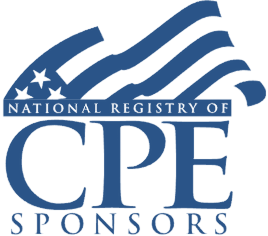Welcome! Save 30% on all CLE, CPE, and Professional Skills webinars, plus 15% off any annual pass with code HOLIDAY25
About the Course
Introduction
This webinar will take an in-depth look at the categories of income reported on Form 1118 for the foreign tax credit. Our knowledgeable panel will explain how these baskets influence the ultimate calculation of the foreign tax credit, the allocation and apportionment of expenses by category, carryovers and carrybacks, and the impact of recent legislation on these baskets.
Description
The foreign tax credit should prevent double taxation on income already taxed by another country. The credit limitations are calculated based on separate income categories on Form 1118. Originally there were two categories, passive and general. Form 1118 now contains many more baskets for income:
- 951A--GILTI
- Foreign branch
- Passive
- General
- 901(j)
- Income resourced by treaty
The foreign tax credit has separate limitations based on the category of income. No foreign tax credit is allowed for Section 901(j) income, income from sanctioned countries. In addition to annual limitations, categorization affects the carryback and carryforward of unused credits. Generally, credits can be carried back one year or forward 10; however, GILTI credits must be used in the year of inclusion. Separate Forms 1118 are required for each category of income.
Once the income is distributed by basket, deductions must be allocated and apportioned to each category. Recent legislation has increased the complexity of these calculations. Tax advisers need to understand the foreign tax credit categories to maximize this credit.
Listen as our panel of international tax experts details the composition of each foreign income basket, recent legislation affecting income and expenses classification, and how categorization affects the utilization of this valuable credit.
Presented By

Ms. Lazarus regularly advises on a broad range of domestic and international tax matters, with an emphasis on the tax planning and transactional aspects of cross-border mergers and acquisitions, business formation, restructurings, joint ventures, inbound and outbound investments, and intellectual property.

Mr. Maguina focuses his practice on a broad range of domestic and international tax matters, such as mergers and acquisitions, corporate restructurings, private equity funds and tax controversies.

Mr. Murwanto leads the firm’s international tax practice in Orange County and the international tax reform committee for the West region. He has 9 years of experience providing global tax planning and compliance services to U.S. and non-U.S. multinational businesses with cross-border business operations and investments. Mr. Murwanto regularly advises clients on complex international tax issues, including base erosion & anti-abuse tax (BEAT) mitigation, global intangible low-taxed income (GILTI) and subpart F planning, foreign-derived intangible income (FDII) optimization, foreign tax credit planning, supply chain management, funding & repatriation strategies, post-M&A integration, corporate inversions, and transfer pricing.
-
BARBRI is a NASBA CPE sponsor and this 110-minute webinar is accredited for 2.0 CPE credits.
-
BARBRI is an IRS-approved continuing education provider offering certified courses for Enrolled Agents (EA) and Tax Return Preparers (RTRP).
Date + Time
- event
Thursday, November 17, 2022
- schedule
1:00 p.m. ET./10:00 a.m. PT
- Foreign tax credit baskets
- 951A--GILTI
- Foreign branch
- Passive
- General
- 901(j)
- Income resourced by treaty
- Recent legislation
- Allocating and apportioning expenses
- Planning to maximize FTCs
The panel will cover these and other critical issues:
- Income allocation planning to preserve foreign tax credits
- Identifying foreign branches and foreign branch income
- Allocating and apportioning expenses by branch
- Reporting income re-sourced by treaty
Learning Objectives
After completing this course, you will be able to:
-
Understand the categories of income reported on Form 1118 for the foreign tax credit (FTC).
-
Differentiate between allocating and apportioning expenses.
-
Identify baskets of income.
-
Ascertain how to preserve foreign tax credits.
-
Recognize how the U.S. foreign tax reporting regime is structured.
-
Establish interest and other expense allocations
- Field of Study: Taxes
- Level of Knowledge: Intermediate
- Advance Preparation: None
- Teaching Method: Seminar/Lecture
- Delivery Method: Group-Internet (via computer)
- Attendance Monitoring Method: Attendance is monitored electronically via a participant's PIN and through a series of attendance verification prompts displayed throughout the program
- Prerequisite:
Three years + business or public firm experience at mid-level within the organization, preparing complex tax forms and schedules, supervising other preparers/accountants. Specific knowledge and understanding of tax credit baskets, including foreign tax credits, IRC 951A—GILTI, foreign branch, passive, and General, and allocating and apportioning expenses; familiarity with income resourced by treaty and Form 1118.

BARBRI, Inc. is registered with the National Association of State Boards of Accountancy (NASBA) as a sponsor of continuing professional education on the National Registry of CPE Sponsors. State boards of Accountancy have final authority on the acceptance of individual courses for CPE Credits. Complaints regarding registered sponsons may be submitted to NASBA through its website: www.nasbaregistry.org.

BARBRI is an IRS-approved continuing education provider offering certified courses for Enrolled Agents (EA) and Tax Return Preparers (RTRP).

BARBRI CE webinars-powered by Barbri-are backed by our 100% unconditional money-back guarantee: If you are not satisfied with any of our products, simply let us know and get a full refund. Contact us at 1-800-926-7926 .
Unlimited access to premium CLE courses:
- Annual access
- Available live and on-demand
- Best for attorneys and legal professionals
Unlimited access to premium CPE courses.:
- Annual access
- Available live and on-demand
- Best for CPAs and tax professionals
Unlimited access to premium CLE, CPE, Professional Skills and Practice-Ready courses.:
- Annual access
- Available live and on-demand
- Best for legal, accounting, and tax professionals
Unlimited access to Professional Skills and Practice-Ready courses:
- Annual access
- Available on-demand
- Best for new attorneys
Related Courses

State Responses to OBBBA Treatment of R&D Expenses: Conforming and Nonconforming States
Tuesday, February 17, 2026
1:00 p.m. ET./10:00 a.m. PT

State Sales Tax on Drop Shipments: Navigating Various States' Rules on Registrations and Exemptions
Tuesday, February 24, 2026
1:00 p.m. ET./10:00 a.m. PT



